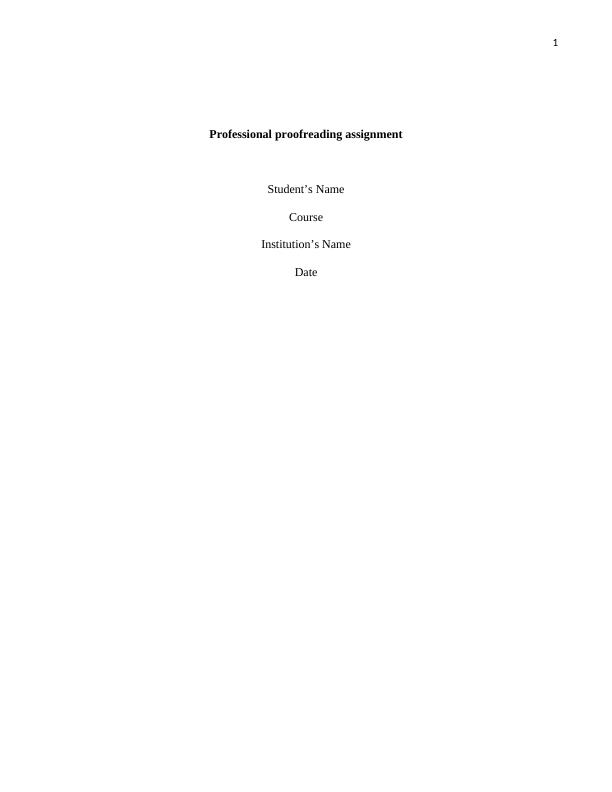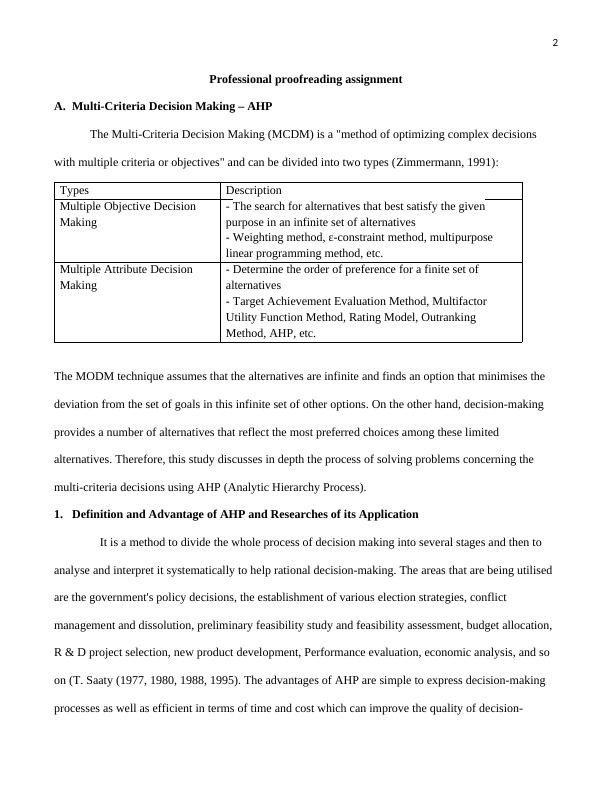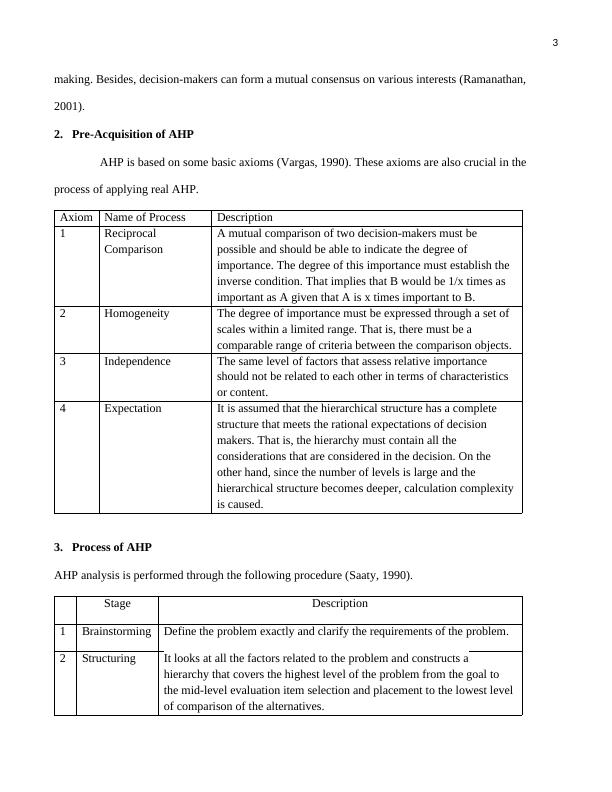Professional Proofreading Assignment
Study on the process of solving multi-criteria decision problems using analytic hierarchy process (AHP)
7 Pages1915 Words160 Views
Added on 2023-04-21
About This Document
This document is a professional proofreading assignment that discusses the process of multi-criteria decision making using AHP (Analytic Hierarchy Process) and Data Envelopment Analysis (DEA). It provides definitions, advantages, and calculations for both methods. The document also highlights the advantages and disadvantages of AHP and DEA models.
Professional Proofreading Assignment
Study on the process of solving multi-criteria decision problems using analytic hierarchy process (AHP)
Added on 2023-04-21
ShareRelated Documents
End of preview
Want to access all the pages? Upload your documents or become a member.
Influencing and Making Decisions
|17
|4537
|139
Information Security and Risk Management
|4
|625
|318
Vendor Assessment: Supplier Evaluation and Assessment
|6
|998
|150



